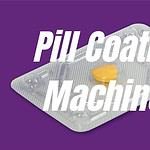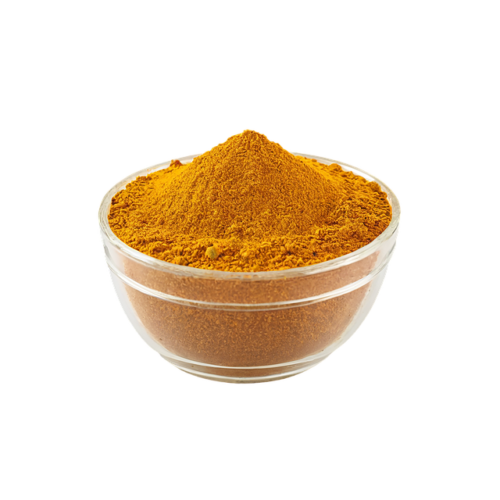
3 Critical Roles of Pill Coating Machines in Medical Research

The Ultimate Guide to Capsule Polishing Machines
6 Maintenance Tips and Solutions for Three-Dimensional Dry Powder Mixers
A dry powder mixer plays a crucial role in the pharmaceutical process, chemical, and food industries. Proper maintenance is essential to ensure smooth operation, consistent mixing quality, and prolonged equipment lifespan. Neglecting routine maintenance can lead to inefficiencies, contamination risks, and costly repairs.

In this article, we will cover six essential maintenance tips and solutions for common issues encountered with Three-Dimensional Mixers, helping pharmaceutical factories and other industries optimize their production processes.
| Maintenance Task | Frequency | Notes |
|---|---|---|
| Inspect rotating parts (shafts, bearings) | Weekly | Ensure smooth motion, no unusual noise |
| Check electrical connections | Monthly | Ensure tight connections, no exposed wires |
| Lubricate moving parts | Every 3 months | Use manufacturer-recommended lubricant |
| Monitor mixing process | Every operation | Check for unusual noise or vibrations |
| Replace worn-out parts (seals, bearings) | Every 6 months | Inspect and replace if necessary |
| Clean internal and external surfaces | After each use | Use non-corrosive cleaners |
1. Regular Inspection of Critical Components
Routine inspections are the foundation of effective powder mixer maintenance. By checking essential components frequently, you can detect wear and tear before they cause operational failures.

A. Checking Rotating Parts
- Manually rotate shafts and bearings to ensure smooth motion.
- Listen for any unusual noises such as grinding or rattling, which may indicate alignment or lubrication issues.
- Ensure that all rotating parts are securely fastened.
B. Examining Electrical Connections
- Inspect all wiring connections to ensure they are tight and free from exposed wires.
- Test safety interlocks and emergency stop mechanisms to ensure they function correctly.
- Perform insulation resistance tests on electrical circuits to prevent short circuits.
🔹 Recommended Frequency: Monthly inspections are ideal. For high-usage environments like a pharmaceutical factory, weekly checks may be necessary.
2. Lubricating Moving Parts Properly
Lubrication minimizes friction, wear, and heat buildup in a Three-Dimensional Mixer, directly impacting its efficiency and lifespan.
A. Choosing the Right Lubricant
- Always use lubricants recommended by the manufacturer.
- Common options include food-grade grease (for pharmaceutical applications) and synthetic oils (for high-speed or high-temperature operations).
B. Applying Lubricant Correctly
- Clean all lubrication points before applying fresh lubricant to prevent contamination.
- Avoid over-lubrication, as excess grease attracts dust and debris, forming abrasive particles that can damage moving parts.
Formula for Optimal Lubrication:
L=M/N×F
where:
- L = required lubricant amount,
- M = machine load,
- N = rotation speed,
- F = friction coefficient.
🔹 Recommended Frequency: Lubricate bearings and joints every three months, but monitor performance for signs of excessive friction.

Solid Preparation Granulation Line
3. Monitoring the Mixing Process for Anomalies
Continuous monitoring of the mixing process ensures consistent product quality and prevents mechanical failures.
A. Checking Display Panels and Indicators
- Ensure that digital indicators, timers, and speed control units are functioning correctly.
- Any sudden fluctuations in speed or power consumption may indicate internal component wear.
B. Listening for Unusual Noises
- A squealing sound might indicate a worn belt or insufficient lubrication.
- Knocking or rattling noises could mean loose internal components.
C. Detecting Vibrations
- Unusual vibrations suggest imbalance or mechanical misalignment.
- If left unchecked, excessive vibrations can cause premature failure of bearings and other components.
🔹 Recommended Action: If any anomalies are detected, stop the machine and perform a thorough diagnostic inspection before resuming operations.
4. Replacing Worn-Out Parts on Time
Even with proper maintenance, some components naturally wear out over time and require timely replacement to avoid production downtime.
A. Common Wear Parts in a Dry Powder Mixer
- Seals and Gaskets – Over time, these develop cracks, leading to powder leakage.
- Bearings – Worn bearings cause increased friction and reduce efficiency.
- Belts and Chains – If these appear frayed or stretched, they need immediate replacement.
B. Signs That Parts Need Replacement
- Reduced mixing efficiency
- Increased operating noise
- Visible wear or damage
🔹 Recommended Frequency: Conduct a detailed component check every six months to replace critical parts proactively.
5. Cleaning the Mixer After Every Use
Proper cleaning prevents cross-contamination and ensures hygiene, especially in pharmaceutical factory and food applications.
A. Internal Cleaning
- Use a vacuum or soft brush to remove excess powder.
- Ensure there is no powder buildup in corners to prevent contamination.
B. External Cleaning
- Wipe the outer surfaces with a damp cloth to remove dust.
- Use non-corrosive detergents for deep cleaning but avoid excess moisture near electrical components.
C. Sanitization for Pharmaceutical and Food Applications
- Disinfect the mixer with approved sanitizers to comply with GMP (Good Manufacturing Practice) standards.
🔹 Recommended Frequency: Clean after every mixing cycle to prevent product cross-contamination.
6. Troubleshooting Common Issues in Three-Dimensional Mixers
Despite careful maintenance, issues can still arise. Here are some common problems and their solutions.
A. Powder Leakage from Inlet or Outlet
Possible Causes:
- Loose locking mechanism
- Worn-out sealing rings
Solution:
- Tighten locking screws properly.
- Replace sealing rings as needed.
B. Mixer Fails to Start
Possible Causes:
- Safety cover not properly closed
- Incorrect speed settings
- Faulty electrical connection
Solution:
- Ensure the safety cover is securely locked.
- Adjust speed settings appropriately.
- Check power supply and replace blown fuses.
C. Unusual Vibrations During Mixing
Possible Causes:
- Uneven weight distribution
- Loose internal components
- Insufficient lubrication
Solution:
- Reposition the load to balance the weight.
- Inspect and tighten all bolts and fasteners.
- Apply lubricant to reduce friction.
D. Excessive Mixing Time Without Proper Homogenization
Possible Causes:
- Overloaded mixer
- Incorrect rotation speed
Solution:
- Reduce batch size to avoid overloading.
- Adjust rotation speed based on manufacturer guidelines.
🔹 Pro Tip: Keeping a maintenance log helps track recurring issues and optimize future servicing schedules.
Final Thoughts
Maintaining a Three-Dimensional Mixer is essential for ensuring smooth operation, reducing downtime, and extending equipment lifespan. By following these six maintenance tips—regular inspections, proper lubrication, monitoring operations, timely part replacement, thorough cleaning, and troubleshooting common issues—you can keep your dry powder mixer running at peak performance.
Additionally, keeping detailed maintenance records can help identify wear patterns, enabling predictive maintenance before failures occur. Investing time in proactive maintenance not only enhances efficiency but also ensures compliance with industry regulations, particularly in pharmaceutical factory settings.
By taking a preventative approach, you will maximize the reliability and efficiency of your powder mixer, allowing it to deliver consistent and high-quality mixing results for years to come.




